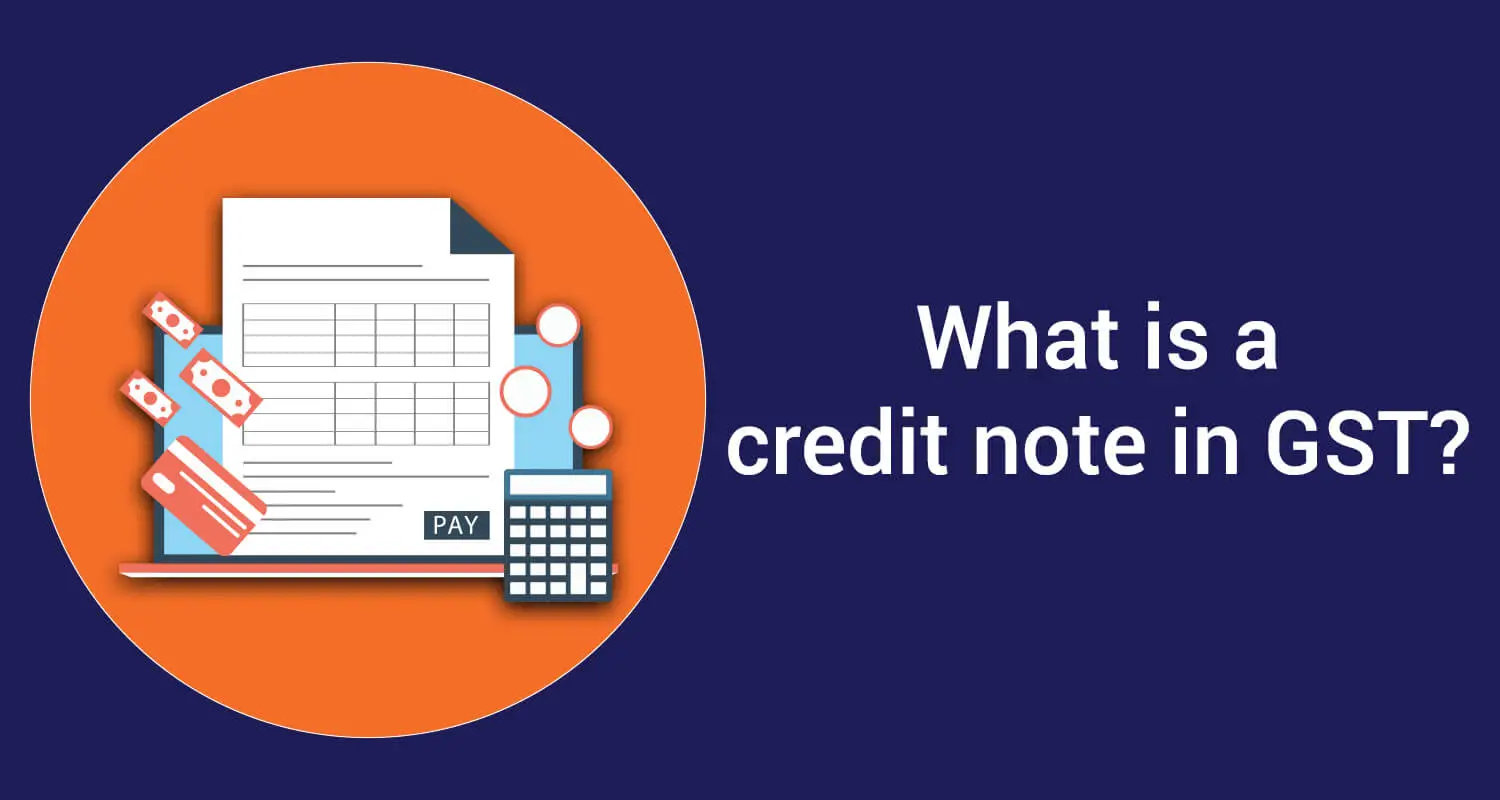Credit Note: Meaning, & How to Issue One

Credit Note Meaning
A credit note is a formal acknowledgment by business owners to their customers regarding owed funds. Its core function is to document the debt owed to a customer, pledging repayment or adjustment against future invoices. Reciprocally, customers issue debit notes mirroring these particulars.
For clarity, consider this credit note example: operating within wholesale Fast Moving Consumer Goods (FMCG), you dispatch a Rs.2 lakh shipment to a customer who has already paid. During transit, goods worth Rs.20,000 suffer damage, leading to a return of goods already sold. Consequently, you owe the customer Rs.20,000.
In response, you can repay the amount in cash or issue a credit note, committing to offsetting the debt in future transactions. If you opt for the latter, you issue a credit note reciprocated by the customer's debit note, and both parties acknowledge the debt. Learn about more Debit Note vs Credit Note.
When Credit Note is Issued?
A credit note serves various purposes and can be issued before or after payment, depending on the stage of the invoicing process. A credit note may be issued in the following scenarios:
- Invoice Error: This includes instances where the invoice contains inaccuracies such as incorrect pricing, products, orders, or errors in discount or VAT calculation.
- Order Error: This error results from damaged or incorrect items in the customer's order, ranging from significant discrepancies to minor issues.
- Change of Order: Whether driven by internal decisions (e.g., management alterations) or external factors (e.g., modifications in the buyer's customer's requirements), orders that have been paid for or placed may require modification or cancellation.
- Customer Dissatisfaction: This occurs when customer expectations don’t align with the received goods, possibly due to the seller's inaccurate product descriptions or listings or if the product fails to meet quality standards.
Sapna aapka. Business Loan Humara.
Apply NowCredit Note Format
A credit note doesn't adhere to a fixed format, but certain essential details must. These include HSN SAC codes (Harmonized System Nomenclature Service Accounting Code) for the involved products, product or service names, quantities, rates, taxable values, integrated goods and service tax (IGST), and the total amount post-tax calculation. Additionally, it should contain the buyer's bank details.
Further, the following information is also needed:
- Issuance date
- GST identification numbers of the buyer and supplier
- Buyer's name and contact information
- Serial number and corresponding tax invoicing date
- Document nature
Credit Note in GST:
According to Section 34(1) of the CGST Act 2017, a credit note is a document issued by a supplier to a recipient in three circumstances: when a tax invoice has overcharged tax, when goods are returned, or when goods/services are found deficient. The recipient may receive a GST credit note from the registered supplier in any of these cases.
The declaration of a credit note in GST returns is vital upon its issuance. According to GST laws, the credit note must be declared in GST returns by either of the following dates, whichever comes earlier:
- The date to file the annual return for the relevant period.
- September 30th of the following year when the supply was made.
Details specified in the credit note must be submitted in the respective month's GSTR-1. If the credit note is issued earlier, it can be revised and reported in the monthly GSTR-1. These details will automatically appear in the recipient's GSTR-2B and GSTR-2A. A supplier can amend the originally issued tax invoice to decrease their tax liability without claiming a refund.
Issuing a credit note under GST allows suppliers to adjust their tax invoice, reducing tax liability without complex refund procedures. Section 34 of the CGST Act states that all debit and credit notes must be reported to the IRP for e-invoicing. Conditions for issuing a credit note include adherence to specified time limits, and it doesn’t need to be linked to the original invoice against which it was issued.
How is Tax Liability adjusted against a Credit Note in GST?
The GST credit note issued by the supplier must comprehensively detail the transaction. The return for the month of issuance should be filed by September following the fiscal year end or the corresponding annual return submission date, whichever is sooner.
Output tax liability reduction isn't feasible if the GST credit note is issued post-September. The supplier's tax liability decreases once a credit note is issued and matched for details. The credit note must match:
- The buyer’s tax return which reflects identical input tax credit reduction for the same or subsequent tax period.
- To prevent claim duplication for output tax liability reduction.
Once the reduction claim aligns with the buyer's input tax credit reduction, it's finalized and communicated to the supplier. However, if the tax liability or the interest from the transaction is transferred to another registered person, the supplier can't reduce output tax liability.
Discrepancies exceeding input tax credit claims or unreported credit notes by the recipient will lead to notification being sent to both parties. Duplicated reduction claims prompt communication with the supplier.
Failure by the buyer to rectify discrepancies in the month communicated results in the addition of said amount to the supplier’s output tax liability in the following month's return. Duplication or reduction discrepancy amounts are added to the supplier’s output tax liability in the month of communication.
Conclusion
Credit notes save the hassle of refund procedures and provide a practical way to deal with product or invoice value changes. However, if you are using a credit note in your accounting procedures and using it in GST, make sure to retain the records for 72 months after the annual return filing for the financial year. Moreover, if you manually maintain everything, keep a copy of the note handy at every registered office location. When used correctly, the credit notes help lower tax liability and offer convenience in business procedures.
If you are a business owner or operate in the SME sector, you can find more valuable information through IIFL Finance blogs. Moreover, you can trust IIFL, which offers easy and quick business loans with minimal documentation.
Sapna aapka. Business Loan Humara.
Apply NowDisclaimer: The information contained in this post is for general information purposes only. IIFL Finance Limited (including its associates and affiliates) ("the Company") assumes no liability or responsibility for any errors or omissions in the contents of this post and under no circumstances shall the Company be liable for any damage, loss, injury or disappointment etc. suffered by any reader. All information in this post is provided "as is", with no guarantee of completeness, accuracy, timeliness or of the results etc. obtained from the use of this information, and without warranty of any kind, express or implied, including, but not limited to warranties of performance, merchantability and fitness for a particular purpose. Given the changing nature of laws, rules and regulations, there may be delays, omissions or inaccuracies in the information contained in this post. The information on this post is provided with the understanding that the Company is not herein engaged in rendering legal, accounting, tax, or other professional advice and services. As such, it should not be used as a substitute for consultation with professional accounting, tax, legal or other competent advisers. This post may contain views and opinions which are those of the authors and do not necessarily reflect the official policy or position of any other agency or organization. This post may also contain links to external websites that are not provided or maintained by or in any way affiliated with the Company and the Company does not guarantee the accuracy, relevance, timeliness, or completeness of any information on these external websites. Any/ all (Gold/ Personal/ Business) loan product specifications and information that maybe stated in this post are subject to change from time to time, readers are advised to reach out to the Company for current specifications of the said (Gold/ Personal/ Business) loan.



